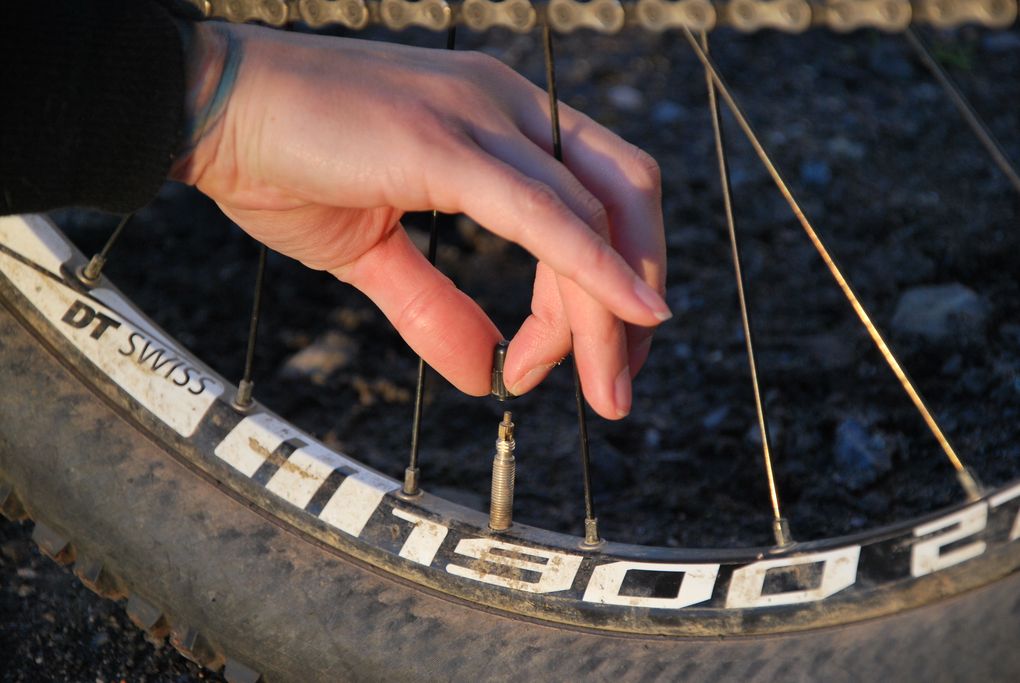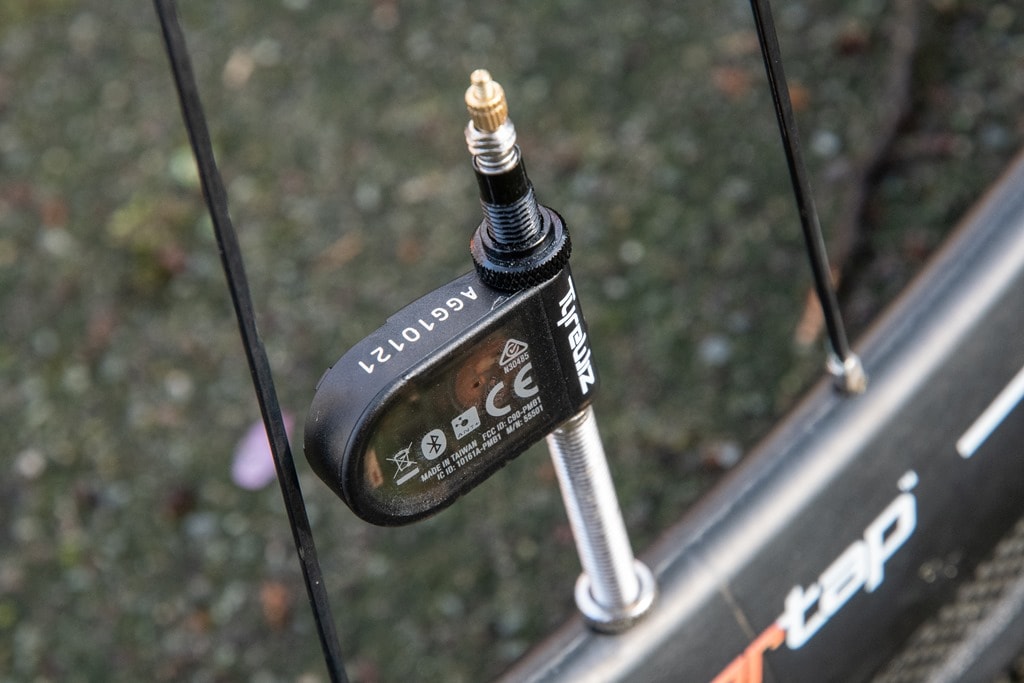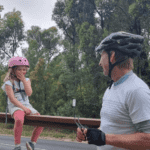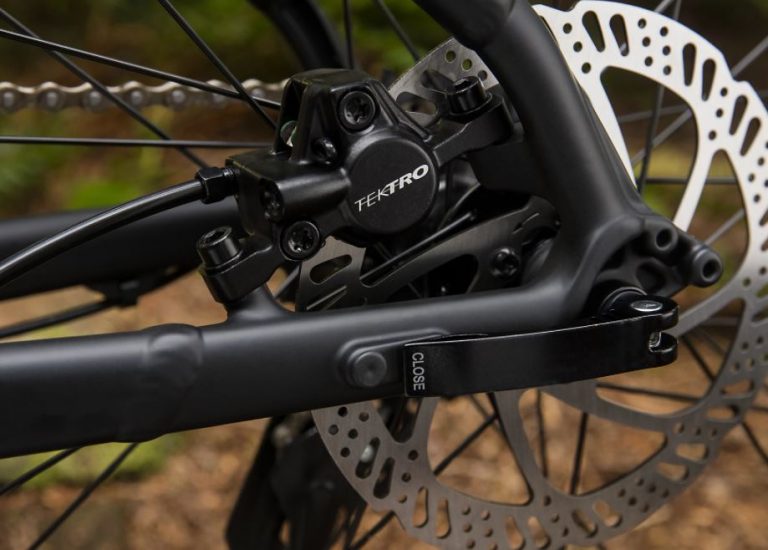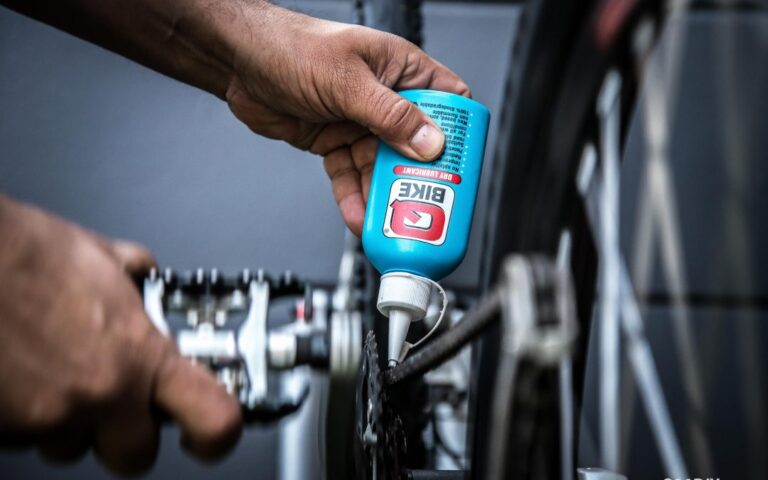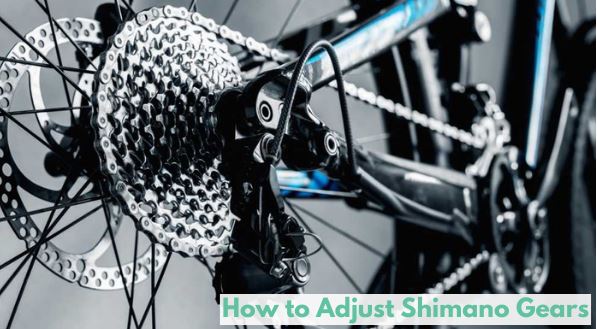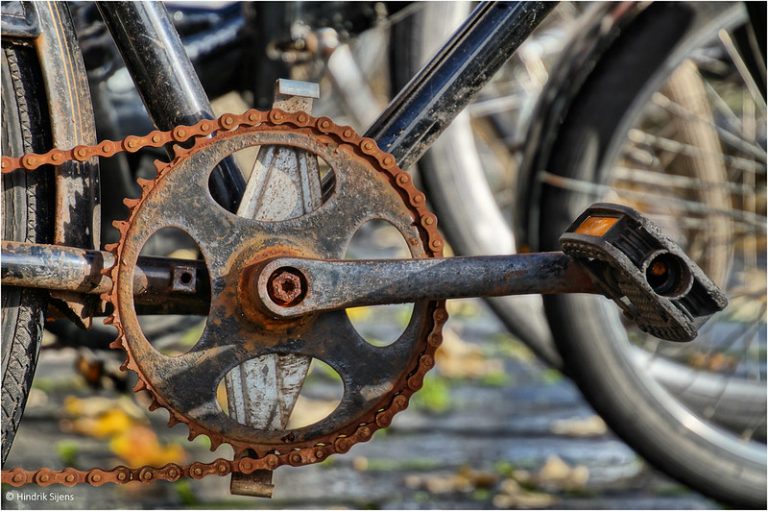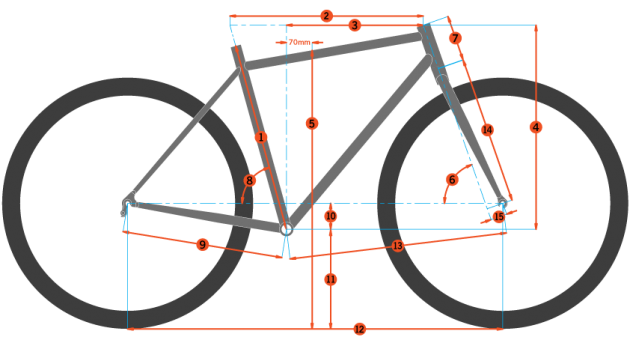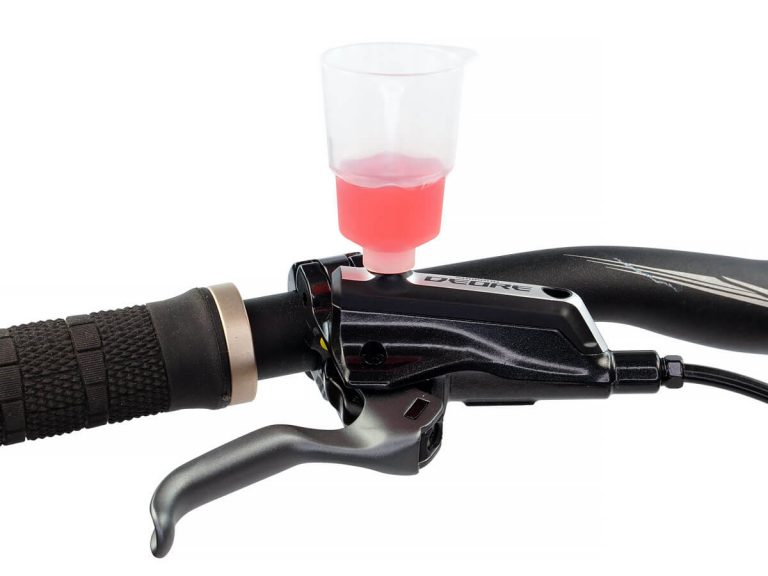Our Guide To Mountain Bike Tyre Pressure
Our tyres are the only point of touch between the mountain bike and the floor when we ride, and tyres have a greater impact on how a bicycle performs than any other expensive, essential accessory. How can you determine the ideal tyre pressure for your mountain bike? It's time to figure out how much pressure you should use on your tyres.
Ask Some Questions
What are the tyre pressures you use? When was the last time you checked? If you ask those questions on the path, most people tend to reach down and gently squeeze the tyre. This gives you an estimate of how much air is in the tyre. The simplest and most cost-effective place to begin if you wish to get the most out of your bicycle is to find the proper tyre PSI.
Does Tyre Pressure Really Matter?
Absolutely. Tyre pressure is critical since it moulds your tyre and determines its footprint. At any one time, the footprint is the portion of the tyre that would be in connection with the floor. Apart from the tread, your tyre grip is controlled by tyre pressure, which also binds the tyre to the rim and might influence rupture resilience.
Pressure and Print
Whenever the pressure is low, your tyre print is larger. This is due to the fact that the combined weight of the cyclist and bicycle flattens the tyre out where it touches the ground. When high pressure is used, the tyre print is evidently smaller because the tyre cannot be squished as much.
What is The Right Tyre Pressure for Mountain Biking?
Regrettably, there is no one-size-fits-all pressure that works for everybody. This is due to the fact that everyone rides differently, with varied tyres and conditions. Personal preference plays a role as well. But don't worry; this article shows you how to determine your individual ideal tyre pressure.
Front and Rear Tyre Pressures
Your weight is spread more towards the back of the bicycle than the front when you are seated on your bicycle and just cycling for a long time. As a result, most cyclists' have high PSI rear wheels and less pressure in the front tyres. It might only be a small PSI difference, but it plays an important role in how each tyre behaves.
Full Suspension and Hardtail Suspension Pressure
Since a full suspension bicycle's back wheel has lots of flex, you can run somewhat lower PSI rear tyres than you would on a hardtail (just front-end suspension) if you possess one. The back suspension enables the wheel to move upwards and cushion the impact as obstacles smack into the rear tyre. Obviously, this does not happen on a hardtail. A good hardtail rider, on the other hand, learns to use their weight and elevate their rear-wheel efficiently to avoid large collisions, allowing them to use lower pressures than a less experienced rider.
Why Using a Lower Pressure May Be A Good Idea
‘Pump tyres up as much as you can,' was formerly the advice offered to mountain bikers looking to find their ideal tyre pressure. Fortunately, those days are gone, and today's tyres can be run at considerably lower pressures than in the past. Why, then, would you want to run lower pressures?
Advantages
There are various advantages. Lower tyre pressures provide more traction since the tyre may flex over obstacles and pebbles instead of bouncing over them. This also enhances stability and enjoyment on both hills and downhills by making the ride feel more controlled.
Offroad, lower pressure might result in decreased rolling resistance because deforming a tyre around an obstruction takes less effort than picking the bike and rider's load up over it. But, are there any disadvantages?
Disadvantages?
We don't believe so, because reasonable low pressures have little effect on a mountain bike tyre's resistance to rolling, and most current tyres don't require high pressures to retain their form and turn properly. However, there is a point at which pressures become far too low, and we show you how to discover the ideal pressure for your cycling.
Factors to Consider When Finding the Right Tyre Pressure
Before you attempt to make any adjustments to your tyre pressure, there are a number of factors that you need to keep in mind. In this section, we go through all these considerations so that you can be aware of whether you need more air pressure, to let some air out, or to have perfect rear tyre pressure.
Rider Weight
The body weight of a rider affects tyre pressure in the very same manner as it affects suspension. A lighter rider may be able to run lower pressures, while heavier riders may need to run marginally higher pressures to achieve the same outcome.
Riding Style
Your riding style is also important. You should utilize higher pressures to preserve your equipment if you are notorious for cycling until your tyres are flat or taking the simplest course through every rocky area. If you ride with a more precise and light' technique, you can profit from the greater grip and comfort provided by lower pressures.
Where You Ride
The ground you cycle on can have a significant impact on the tyre pressure you should use. If you mostly cycle smooth, difficult flow routes, you can use somewhat lower pressures as long as your tyres keep their form through the bends. If you ride paths that have more stones than a rocky beach on a regular basis, you should use higher tyre pressures to safeguard your wheels and tyres.
The Tyres and Rims You Use
Your selection of tyres is just as important as most of the other factors. Keep an eye on your rubber casing. Is it a durable dual-ply shell meant for difficult endurance cycles, or a light solitary alternative that prioritizes weight savings above puncture preservation?
What about Tubeless Tyres?
Another essential consideration is whether or not your bicycle is tubeless. Because there is no tube between an impediment and the rim, a tubeless configuration may often run lower pressures, avoiding the feared snakebite puncture. Larger rims provide the tyre with greater support and possess a larger volume, enabling you to use lower pressures without sacrificing performance. Also, consider experimenting with higher and lower PSI rear wheels.
Pressure for Tubeless Tyres
Tubeless tyres, as previously stated, can be operated at low pressures without the risk of snakebite ruptures. However, the ideal tyre pressure for a tubeless setup is determined by the parameters described above and varies according to riding style and environment.
What are Tubeless Tyres, Anyway?
Tubeless is a term that you may not be familiar with. Apart from some street wheels and tyres, tubeless equipment is now widely used in the cycling community. Your tyre pressure may also be affected as a result of this. Since a tubeless setup does not require an internal tube, you can run lower pressure without fear of rupturing your tyre. With reduced pressure, you receive better grip and comfort, which is ideal for mountain trails and dirt roads.
The Basics of Tyre PSI
Compressed air enclosed in inner tubes and chambers supports inflatable tyres on any vehicle. The tyre becomes harder as the PSI (pounds per square inch) increases. It has a gentler feel when the PSI is lower. The amount of pressure in a bike's tyres has a significant impact on how well it operates. The most straightforward and crucial element of routine maintenance and servicing you can undertake is checking your tyre pressure.
Where do You Start?
If you're a newcomer to cycling and have just purchased a street, mountain, dirt, or cyclocross bicycle, where do you start? Every bicycle tyre has the suggested PSI imprinted into the material on the side, which is quite convenient. For easier reference, position the pressure suggestion adjacent to the pressure gauge when fitting a tyre.
Suggested tyre pressure concerns the primary purpose and the best spectrum for that application. You need to determine where the tyre's ideal pressure is, where the higher pressure won't blow off the wheel and the low pressure won't leak or tear off the rim.
The majority of mountain bike tyres have a PSI rating of 25-50. The pressure on street tyres is typically 80-120 PSI. Gravel tyres typically have a PSI of 40-80. While they are a decent starting point, most cyclists may find those parameters to be excessively broad and safe.
Using Tyre Pressure Gauges
Trying to set up your pressure requires a straightforward tyre pressure gauge, and many pumps come with built-in gauges. There's a risk that these may be a little off. It's fine if you feel yours is wrong, so long as you are aware of what to see and inspect your tyres frequently before each trip.
If you're truly worried, compare it to a known-to-be-correct pump, such as one from your local cycling store or a high-precision tyre pressure gauge. These gauges generally provide a good starting point for the pressure on your mountain bike.
How Mountain Bike Tyre Pressure Affects Rolling Resistance
A tyre with reduced resistance to rolling, whether on pavement or trails, requires less power to move ahead while simultaneously delivering a nicer ride. Small bumps are absorbed by the tire rather than being transferred to the bike and cyclist, providing a smoother ride, higher speeds, and improved handling. How could you say no to that?
You Must Know How to Balance Your Pressure
Knowing how to balance your pressure is critical. Some cyclists prefer to have a low PSI rear tyre and this has some benefits. One of these is the resistance to rolling. Higher pressure often means that the resistance is lower.
You may prefer to have a higher PSI rear tyre and lower PSI front tyre if you ride through trails and routes in mountains and other off-road routes. More air in the rear tyre makes it easier to cycle while the lower MTB pressures in the front tyre allow improved control.
How to Know When Your Tyre PSI is Wrong
There are a number of things that can be wrong with MTB tyre pressures. It is imperative that you are able to identify what the problem is and rectify it timeously.
Pressure is Too High
Higher pressures generally seem like the way to go for beginner cyclists. However, if you are sliding around constantly and are battling to gain any traction, you may want to consider letting some air out. Slightly lower pressures can change your mountain biking experience entirely.
Pressure is Too Low
The tyre may feel pliable, you may end up losing or blowing air on pebbles or turns, and in extraordinary situations, it may roll off the rim. You can feel as if you're lugging extra weight uphill. When you drive over stones, you may hear dings or blows to your rim. If you notice that noise, increase the amount of air in the tyre. It is amazing what the correct pressure can do. Slightly higher pressures could change the ease of your ride.
Does Temperature Affect Pressure
At the trail, double-checking your pressure is highly recommended. The pressure might be affected by the temperature difference between inside and outside your garage. For instance, if you set your pressure in a 74-degree area, then load your bicycle into the vehicle and travel to a route where the weather is 80-90 degrees, you can check the same gauge and the pressure may end up several PSI higher than you expected simply due to the difference in air temperature.
Tyre Pressure and Performance
The final point to think about when it comes to tyre pressure deserves its own part in this post, and even then, there won't be enough room to go over every detail of how tyre pressure affects a bike's performance.
Important Variables
Grip, rolling speed, and ergonomics are the most important variables. You should be able to optimize all three parameters if you cycle with the proper pressure in your tyres. Tyre performance can be harmed by extremely high or low pressure.
Low Pressure
Low pressure generally improves traction, as mentioned before in this post. This is because it expands the contact area of the tyre on the floor. Lower PSI tyres adapt better to the terrain they're rolling on, enhancing traction.
Traction
From turning to ascending to stopping, traction is critical in a variety of scenarios. Better traction allows you to overcome your bicycle's innate proclivities in each scenario. Advancing momentum makes turning more challenging, but with the appropriate technique and cyclist input, you should be able to turn in a loose sandy corner provided your tyre grips well.
Braking
Braking forces work against speed as well. You should be able to slow down or stop more efficiently and smoothly with the tyre pressure to gain traction on loose terrain or wet roads.
With the proper tyre pressure, your bicycle should feel a lot more comfortable. This performance attribute increases with lower pressure, just like grip. Low pressure provides more comfort at all touchpoints on your bicycle, from your boots to your seat to your wrists and shoulders.
However, there is a limitation to how supple we desire our tyres to be. We enjoy the extra traction that low PSI provides, but a tyre's softness eventually leads to excessive rolling resistance, causing bicycles to feel sluggish.
On firm, polished surfaces like concrete, this would be most evident. Low tyre pressure can also affect bike control by making the front section less responsive to steering or allowing the tyre to spin too much on the rim during turning.
Advanced Tyre Pressure Considerations
Adjusting your PSI in the middle of a cycle to experiment with how your bicycle feels is the first stage toward really learning a lot about tyre pressure. This is more relevant to mountain, dirt, or cyclocross cycling, but there's always the potential you can get caught in a sudden rainstorm on a street ride, necessitating a bit less pressure.
It is Easier to Delfate than to Inflate on the Trail
It's much easier to deflate your tyres during a trip than it is to inflate them. When you are uncertain, start a cycle at the top of the PSI range and gradually let out air, going by experience. Check to see whether your traction has improved. If you're riding tough routes, be cautious not to overextend yourself.
Tyre Pressure Doesn't Have to be Equal
Mountain bikers frequently use slightly higher PSI rear tyres, and you may try it out as well. The concept is that because you have less mass on the front tyre due to your body posture, you can use a lower PSI and so have more grip for turning. Pressure may be fine-tuned with considerable effect in a 2.2-2.5″ mountain bike tyre with a larger volume of air.
Consider New Technology
When it comes to experimenting with pressure, bike riders should consider a new technology known as a tyre insert. The fundamental concept is to insert a foam circle inside a tubeless tyre, which can lower air pressure and safeguard your rim from serious harm, regardless of the brand. With inserts, you can run at a low pressure with minimal downsides.
The Bottom Line
You might choose to experiment with the PSI, or you may choose to set it and ignore it. Either option is acceptable if you understand the basic balancing job that comes with selecting how much to inflate your tyres. Getting low enough to enhance grip and convenience without incurring flat tyres or losing resistance and control is how you locate that equilibrium point.
Proper Pressure is Crucial
A cyclist on a bicycle is fairly light and slow-moving relative to most cars, making proper tyre pressure significantly more crucial from a performance aspect. Know how to use both low and high pressure in your tyres. Experimenting with different pressures on your mountain bike is a great way to start. Always remember that air is free, so take advantage of it whenever you're out for a cycle.

